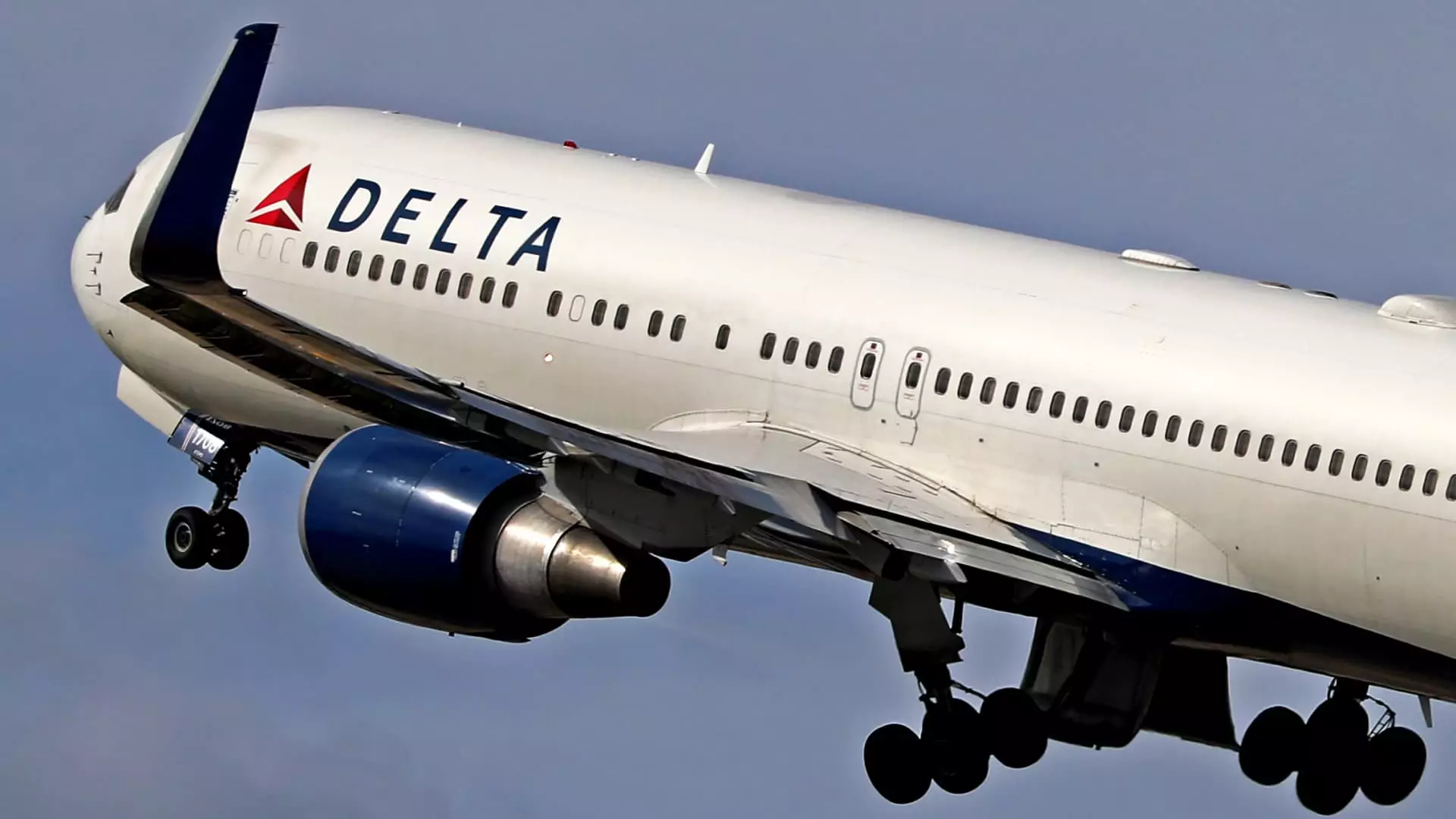In recent weeks, the airline industry has faced a concerning downturn, as evidenced by a staggering 18% decline in the NYSE Arca Airline Index during the first quarter. This decline comes as no surprise given the growing apprehensions on Wall Street regarding travel demand. The landscape is becoming increasingly bleak; numerous factors, such as consumer confidence and looming tariffs, threaten to stifle what was once a booming recovery in air travel. Indeed, the air travel market, characterized by volatile consumer behavior, now stands in stark contrast to the optimistic forecasts that once buoyed investor confidence.
Delta’s Downward Trajectory
Delta Air Lines, a company historically considered a stalwart in the industry, recently found itself in the crosshairs of unfavorable scrutiny. After Jefferies downgraded Delta to a hold rating from buy and slashed its price target to $46, the airline’s shares took a dive, reflecting that the market is far from reassured about its prospects. The downgrade followed Delta’s own admissions of trimming first-quarter guidance and the whisperings of potential reductions to its 2025 forecasts. While the airline has succeeded in increasing revenue from premium cabins and strategic partnerships, this is hardly a panacea for the broader woes pervading the sector.
Cascading Effects on Competitors
Delta isn’t standing alone in this turbulent atmosphere; the ripple effects are evident across the entire airline sector. American Airlines and Southwest Airlines also faced downgrades from Jefferies, with their stocks following Delta’s downward trajectory. American saw a drop of 2%, while Southwest suffered an even more drastic 5% decline. The unfortunate reality is that these companies, seen as leaders, are now scaling back expectations amid a climate that increasingly favors cost-cutting consumers over travelers willing to splurge on premium experiences. This poses the question—how much longer can traditional carriers survive if consumer sentiment continues to weaken?
The Data Doesn’t Lie
Compounding the sector’s troubles, a recent report from Bank of America indicated a troubling trend: while overall spending on credit and debit cards rose 1.5% year-over-year, spending on airlines fell by a staggering 7.2%. This data starkly highlights a potential shift in consumer behavior—a retreat from travel plans amid economic uncertainty. Analysts suggest this is not just a seasonal hiccup influenced by inclement weather or the timing of holidays; it seems to reflect a deeper anxiety among consumers that precludes them from booking flights.
The Overall Outlook: A Cautious Stance
With the airline earnings season set to kick off soon, the focus will be on how executives frame these distressing trends. As they prepare to report their earnings, there’s a palpable tension amongst industry leaders who must navigate this turbulent environment. United Airlines remains a lone beacon in an otherwise stormy sea, holding onto a buy rating despite a significant cut in its price target. However, one must question whether this cautious optimism can be sustained against a backdrop of declining consumer confidence and adjusting spending patterns.
The airline industry currently faces a perfect storm of economic pressures, presenting a formidable challenge for even the most resilient players. As consumers pull back and the macroeconomic landscape shifts, only those who adapt strategically will thrive in this unpredictable climate.

